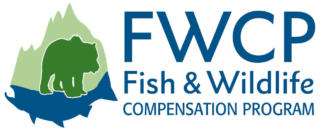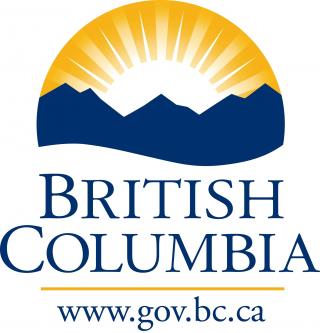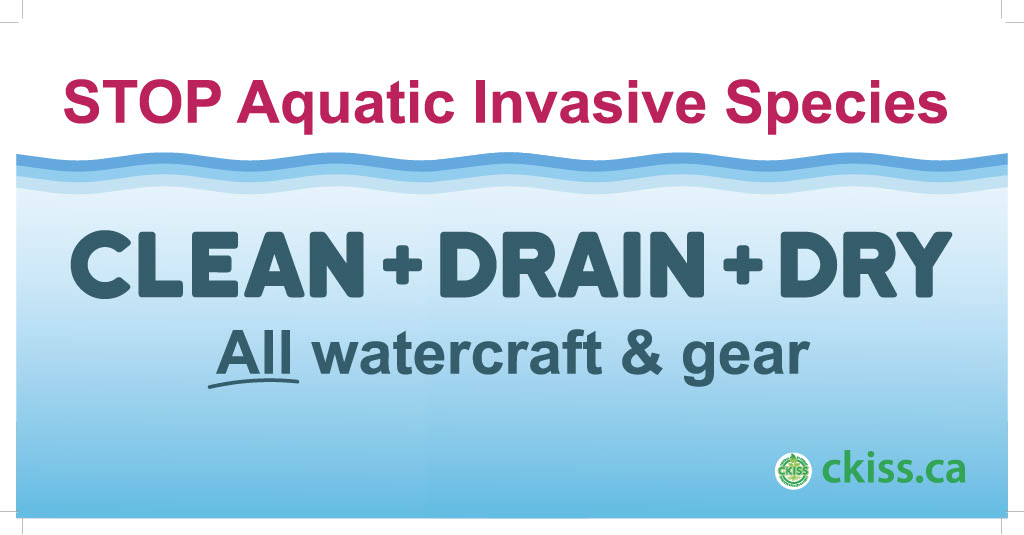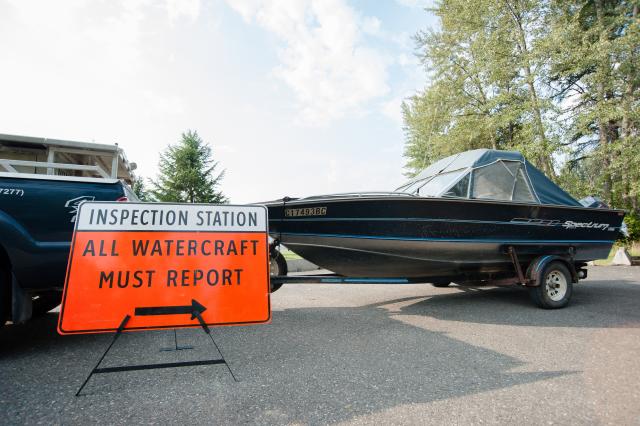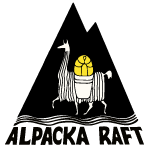With boating season in full swing we here at CKISS want to remind water enthusiasts that boats have been identified as a key pathway for invasive species spread into our precious waterways. Please educate yourself on how to Clean, Drain, Dry your boat and equipment to prevent the spread & protect our waters.
So What’s the Big Deal with invasive species you ask?
Invasive species are bad news for our lakes, streams, and wetlands. Take Eurasian watermilfoil for example: first detected in B.C. in 1970, it reduces biological diversity and decreases water quality by out-competing native plants for space and resources. Eurasian watermilfoil may be responsible for some of your itchy mosquito bites! It creates dense patches that result in stagnant water: the perfect breeding ground for mosquitoes. Tangled mats of underwater strands can impact your summer fun like swimming, boating, and fishing. The plant can also hit you in the pocket book by clogging irrigation systems and drains resulting in increased maintenance costs.
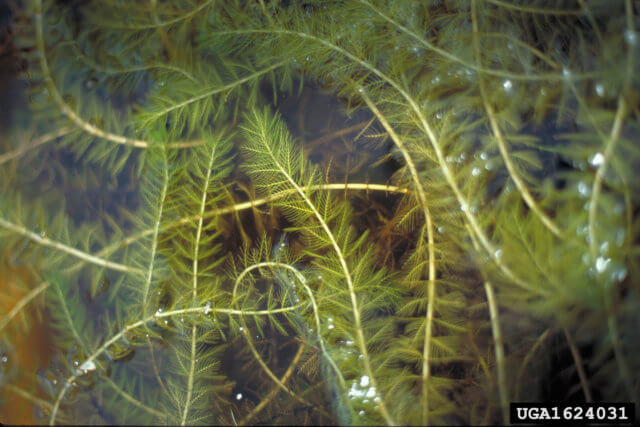
Milfoil is just one example of the many aquatic invasive species that we don’t want in the Kootenays. If you are keen to learn more about specific aquatic invasive species like fragrant water lily or Northern pike you can see full species profiles by clicking here.
So how can we stop the spread?
The best tool we have to protect our waters is prevention! Since invasive species can hitchhike on boats, trailers, fishing gear, life jackets and other boat related equipment it is vital that all boaters are following the Clean, Drain, Dry steps when travelling between different bodies of water within B.C.
**Please note that if your boat has travelled outside of B.C., your boat may need to be decontaminated by trained personnel. See the information on watercraft inspection stations below. **
If your boat stays in B.C., you can avoid transporting aquatic invasive species by following these steps yourself:
• CLEAN your watercraft and equipment. After an enjoyable day on the water spend the time inspecting your watercraft and all of your gear for any signs of plant or animal material. Invasive hitchhikers can be anywhere so look in all the nooks and crannies. It is not just motorized boats that can transport invasive species: canoes, kayaks, paddle boards, floaters, oars , life jackets, fishing gear, just to name a few, need to be cleaned as well. Rule of thumb: if it touches water it needs to be cleaned.
• DRAIN onto dry land any item that can hold water (e.g. bilge, ballast, wells, buckets). Leave the drain plug out to ensure the bilge can dry.
• DRY all items completely before launching the watercraft into another body of water. No standing water! 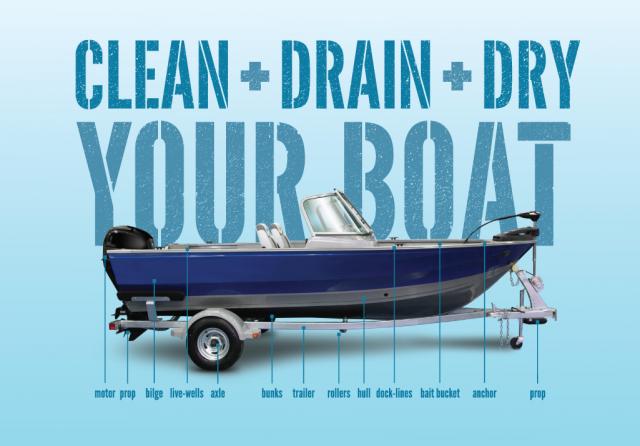
Where can I clean my boat?
We encourage you to take your watercraft to a commercial car wash when travelling between water bodies. You can see a list of wash locations that are located within the Columbia Basin by clicking here. If a commercial car wash is not available then a little elbow grease, water and scrub brush will do the trick. Invasive hitchhikers can be anywhere so look in all the nooks and crannies!
NEW Clean, Drain, Dry Billboards!
Thanks to funding from Fortis BC and Columbia Power four new Clean, Drain, Dry billboards have been created . Within our region they are located in Castlegar, Nelson, and Trail. Since invasive species do not know boundaries, the CKISS partnered with the Boundary Invasive Species Society and the Christina Lake Stewardship Society in order to install a Clean, Drain, Dry billboard between Christina Lake and Grand Forks. We hope these billboards will remind folks who are travelling between water bodies the actions they can take to protect our waters from aquatic invasive species.
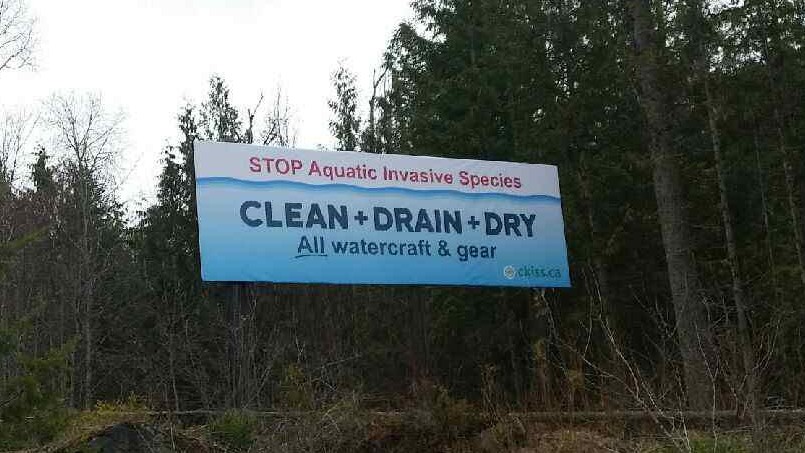
MANDATORY Watercraft Inspection Stations
If you see this sign and are travelling with a boat, including the non-motorized kind, you must stop for an inspection. The province of B.C. Invasive Mussel Defense program is working hard to prevent the invasion of these highly invasive animals.
Invasive mussels cannot be eradicated once established in a water body. Invasive mussels can cause all of the following impacts:
- Clog water supply systems & hydropower facilities, increasing costs to the consumer
- Harm drinking water quality by causing toxic algae blooms
- Crash native fish populations such as sockeye salmon
- Cover beaches with foul-smelling, razor-sharp shells
- Displace native aquatic plants & wildlife, reducing biodiversity & ecosystem health
- Increase the growth of aquatic weeds, interfering with swimming and boating opportunities
To learn more about how a zebra/quagga mussel invasion would impact B.C. click here.
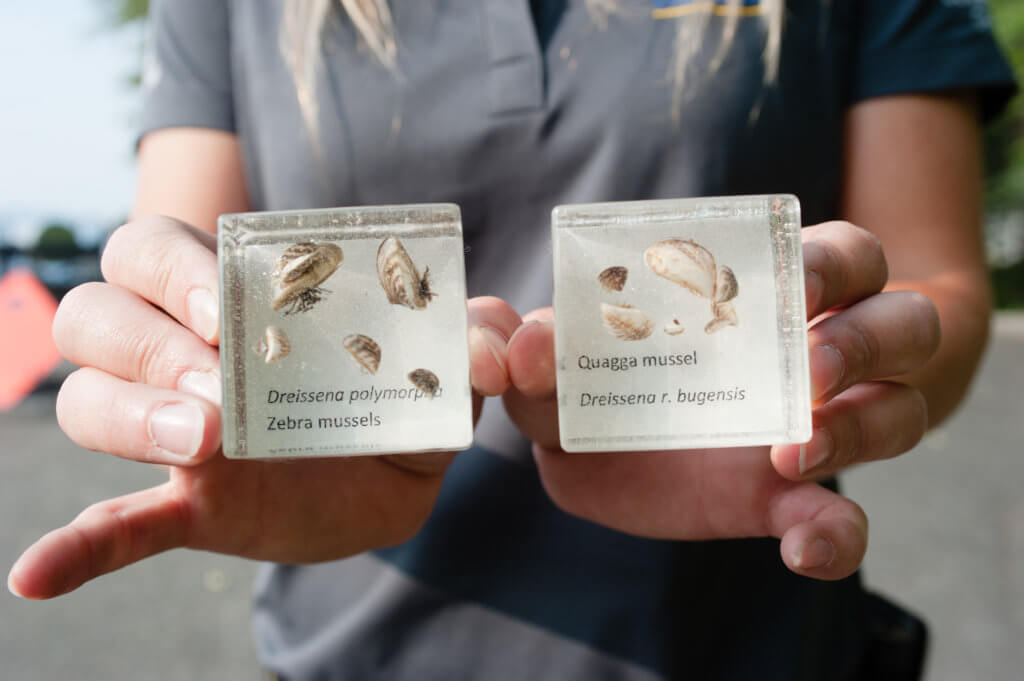
To date, B.C. is still free of zebra and quagga mussels, and we want to keep it that way. Become familiar with what provinces and states are contaminated with invasive mussels: sadly there are a lot. If you have visited a red or gray shaded province or state, DO NOT attempt to clean the watercraft yourself. Your watercraft may be carrying invasive mussels and may require decontamination. Call 1-877-952-7277 or visit a provincial watercraft inspection station. It would only take 1 contaminated boat to devastate our waters!

CKISS Zebra and Quagga Mussel Monitoring Program
Next to prevention, the next best tool in our tool box is early detection and this is why CKISS has increased sampling frequency in 2018. Weekly plankton sampling for invasive mussels in the Central and West Kootenay area kicked off in June 2018 and will run until October 2018. To date, the CKISS staff have collected over 60 samples at 30 sites within 9 different waterbodies in our region.
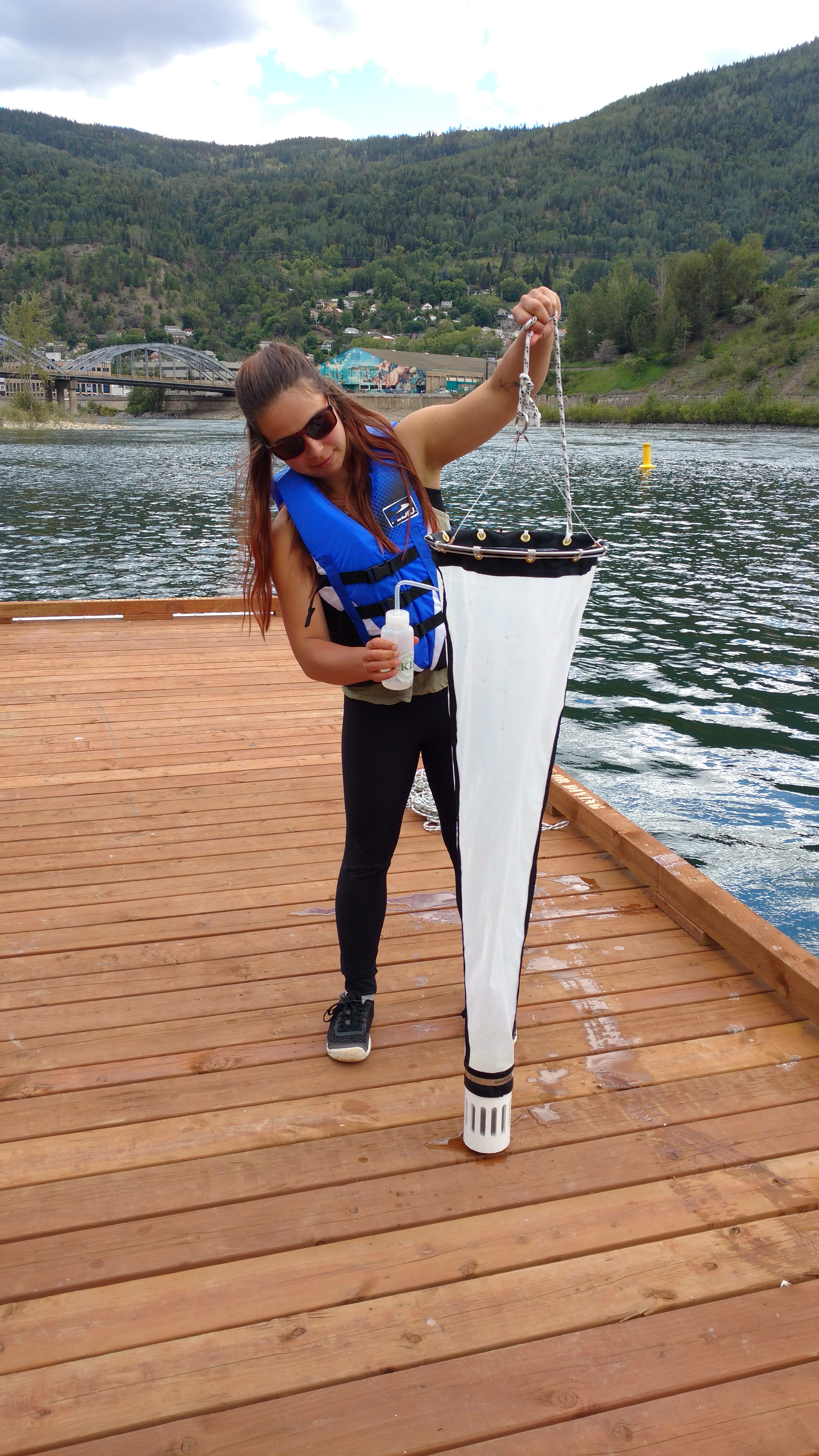
Thanks Heaps!
Our efforts to protect our precious water bodies from aquatic invasive species is possible due to the generous support from the following organizations and companies:

